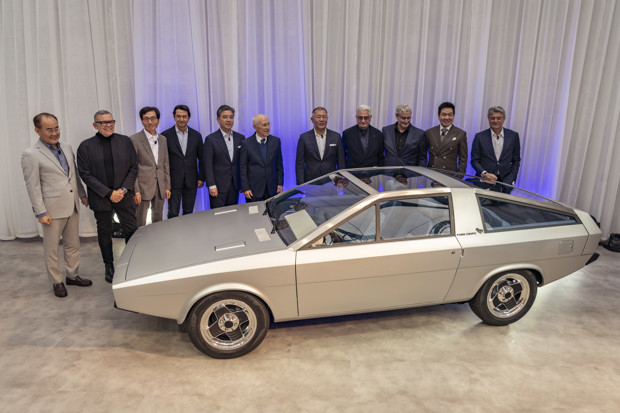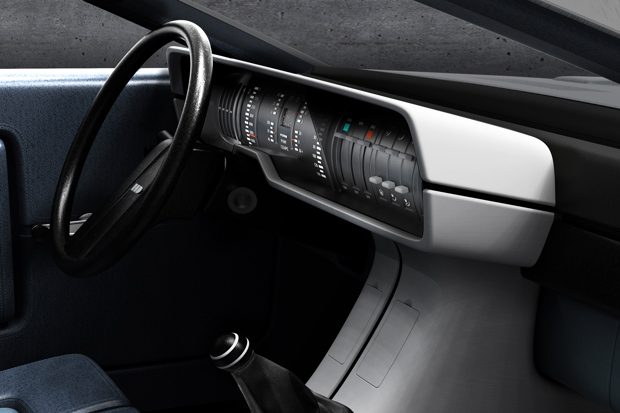Hyundai recreates 1970s Hyundai Pony Concept car

Hyundai has recreated its Hyundai Pony Coupe Concept car, originally showcased at the 1974 Turin Motor Show.
The Hyundai Pony Coupe Concept holds immense significance in Hyundai Motor's design heritage and represents a pivotal vehicle in the company's past.
At the Hyundai reunion, guests including Giorgetto Giugiaro and his son Fabrizio Giugiaro, both renowned designers, were present to commemorate the restoration project completed by GFG Style.
The style centre, led by Fabrizio and Giorgetto, played a key role in resurrecting the car that paved the way for Korea's first independently developed mass-production models, the Pony range.
Due to unfavorable global economic conditions in the late 1970s, Hyundai's ambitious sports car never entered commercial production and remained lost to history.
It did however, serve as design inspiration for recent Hyundai Motor models. Notable examples include the N Vision 74 hydrogen-hybrid electric 'Rolling Lab' development vehicle and the '45' EV concept car, which influenced the creation of the Hyundai Ioniq 5.
The Pony Coupe Concept was unveiled at a world premiere in Lake Como, Italy, at the inaugural Hyundai Reunion event.

"Despite the poor industrial environment in the 1970s, my grandfather and Hyundai’s Founding Chairman Ju-young Chung poured his heart and soul into rebuilding Korea’s economy and improving the lives of its people after the devastating Korean War," said Euisun Chung, Executive Chair of Hyundai Motor Group
"He finally realized his vision of making Korea a country capable of developing its own vehicles with perfection. I express my sincere gratitude to everyone from both Italy and Korea who played a critical role in the success of Pony," he added.
The Pony Coupe Concept boasts an origami-like exterior characterised by flowing geometric lines. Its wedge-shaped front end and circular headlamps captivated audiences in 1974. The coda tronca ('cut-off tail') design features a slim hatch, providing access to the rear of the vehicle.
Inside, the minimalist interior emphasizes the monocoque design and driver-centered floating architecture. A single-spoke steering wheel and two-toned slim-line bucket seats reflect the futuristic aesthetic of the 1970s.
"Hyundai approached us to start a complete redesign of a model, without much experience. I was skeptical at first because I didn’t know Hyundai Motor at that time," revealed Giorgetto Giugiaro when recalling designing the original 1974 concept.
"We were all impressed by the passion and commitment of the Hyundai engineers. They were sharp, curious, open and extremely eager to learn. They immediately embraced the working methods that were new to them. They sacrificed themselves to make a good impression - for company and their partners. I’m proud and honored to witness how this company has evolved since we first met," he added.

Should I be concerned about buying a high mileage Hyundai Santa Fe?


